Best winter garden plants: 19 picks for seasonal color
Let your garden sparkle with the best winter garden plants and instantly bring your plot to life in cold weather
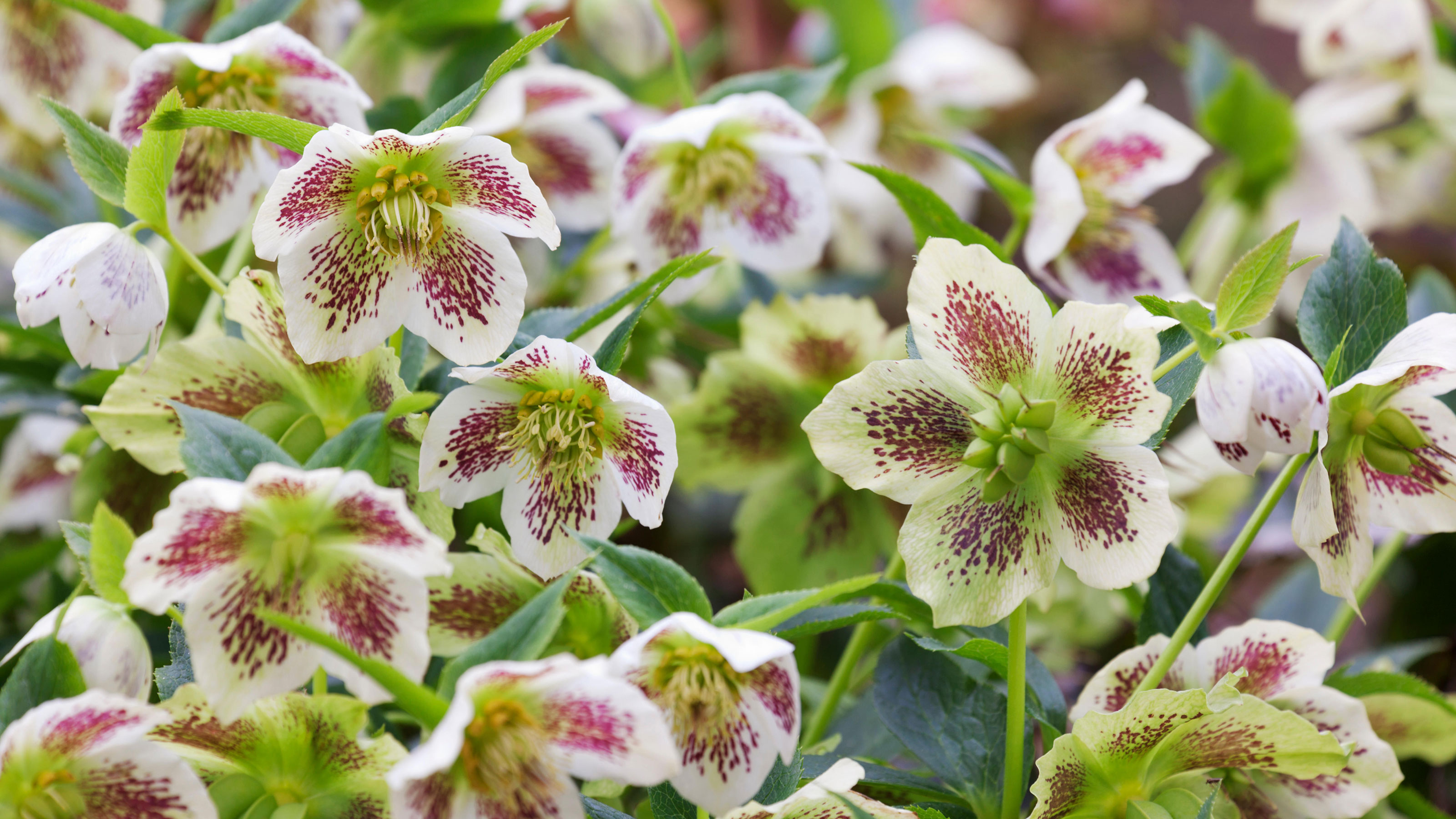

The best winter garden plants may have less choice than the plentiful annuals and perennials on offer in summer and the the vast array of blooms and blossom in spring. But the great thing about winter is that the plants which are thriving can really shine through the stripped back bareness of the rest of the garden.
Plants which you didn't really appreciate for their beauty during summer may become the main focal point during the cold months, adding some much needed interest to your winter garden ideas.
As gardens are reduced to the bare minimum during the colder months, the simplest things draw attention. Skeletal curled forms of corkscrew hazel for example, or plants with stunning bark such as the Tibetan cherry tree. So whilst winter can be be a bleak time of year, try to think of it as an opportunity to see nature in a new way.
Winter garden plants are often richly scented, and that can be a real mood booster too. Although the weather might be cold, there are often bright sunny days, so a little stroll in the garden to enjoy these scents can really lift the spirits.
And of course it's not just bare trees and stems, as there are some wonderful hardy blooms and berries which bring pops of color through the bleak midwinter.
Create seasonal interest with the best winter garden plants for your plot
By adding the best winter garden plants to pots, beds and borders, you will fill your plot with vibrant foliage, winter berries and wonderful scent. There are plenty of options to choose from in our stunning selection.
1. American Wintergreen (Gaultheria procumbens)
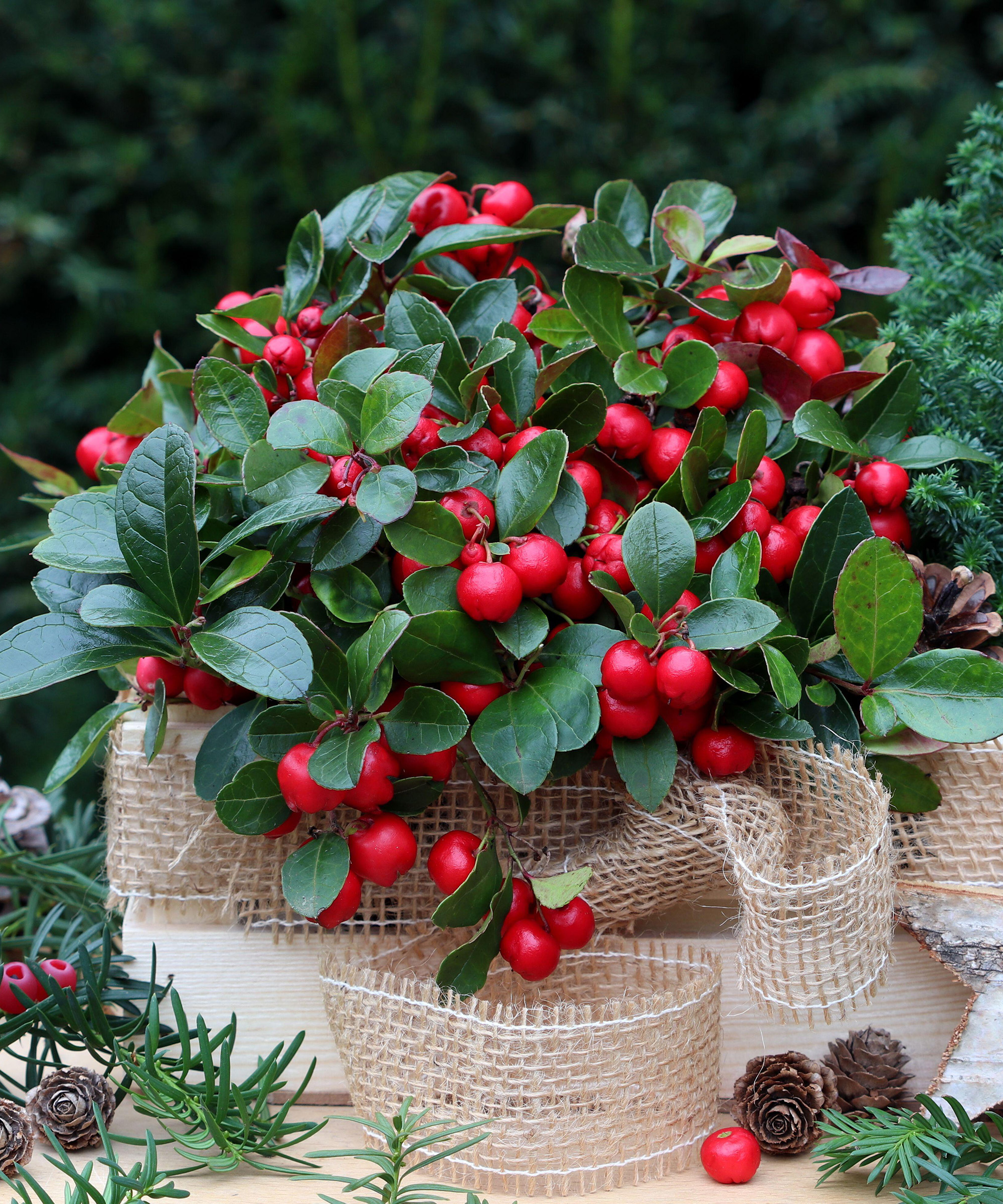
If you're searching for the best winter plants for pots, this dwarf evergreen shrub is perfect for containers and produces vibrant red berries that will light up gloomy spots. Its leaves also add interest, taking on a red hue in the winter.
Plant it in acid soil or grow in a pot with ericaceous compost. Combine with dwarf conifers for a super festive display, whilst pansies and miniature cyclamen will give an extra splash of color.
A pretty plant which will survive in shady spots but prefers filtered sunlight for flowers and berries to grow. Best in US Hardiness zones 3 - 7, and it has a height and spread of 20in (50cm).
2. Skimmia Japonica
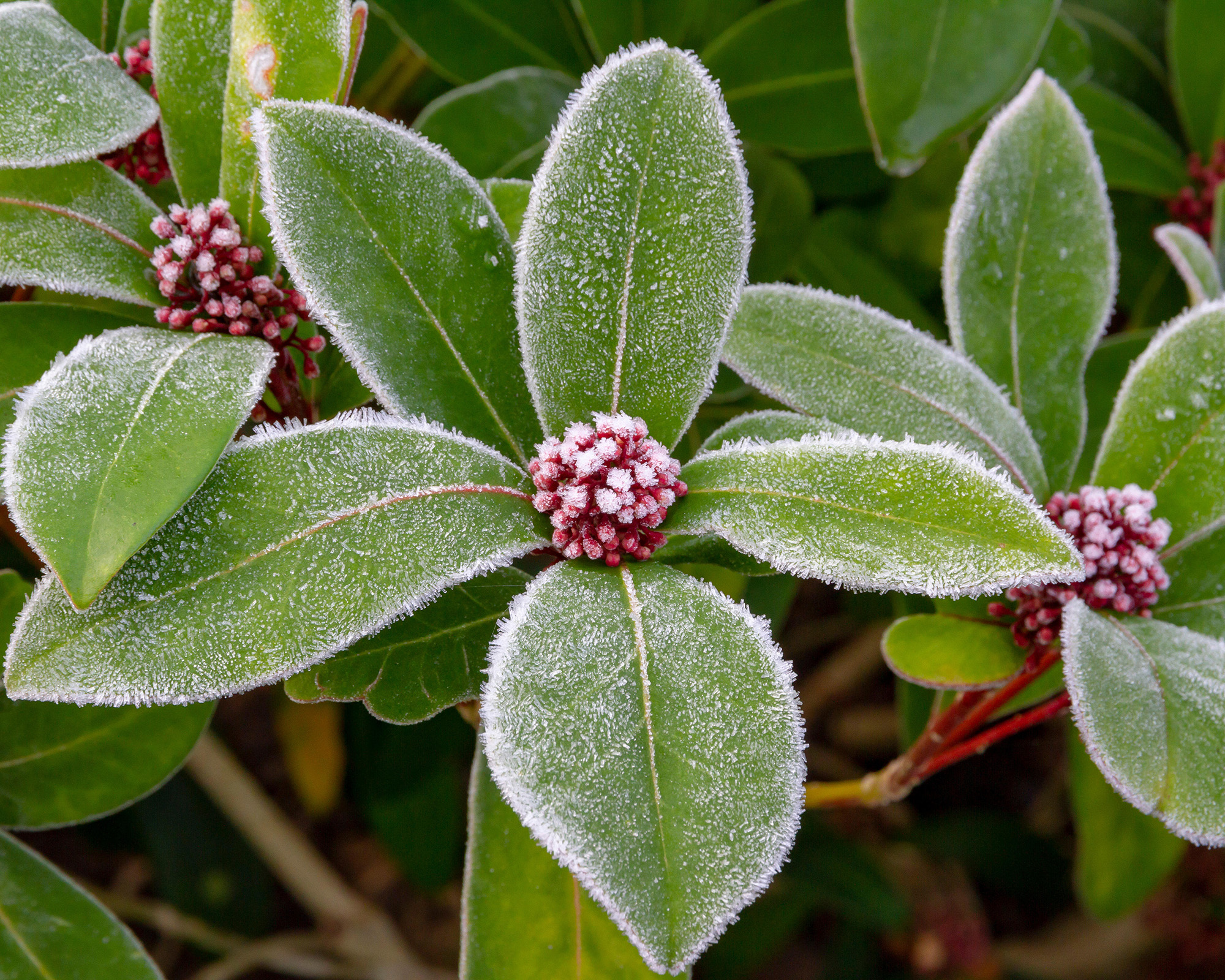
Skimmia is a lovely shrub and some forms have wonderful spring foliage as well as the colorful flowers and berries, but even just the ‘plain’ foliage is very attractive and forms a good backdrop to the flowers.
Skimmia japonica is hardy, making it one of the best winter garden plants. It does best on rich slightly acidic soil, and is happy in both sun and shade. It reaches a height of 3-5ft (1-1.5m) with an equal spread, but it is not a rapid grower and can be kept in check by pruning if necessary.
It does best in a shady area and can even tolerate deep shade. Too much sunlight can turn its leaves yellow. Plant yours in neutral or acidic soil. If you garden on very chalky soil, you will do better putting it in a container of ericaceous or John Innes No3 compost. Likes US Hardiness Zones 6-8.
3. Hellebores (Christmas rose)
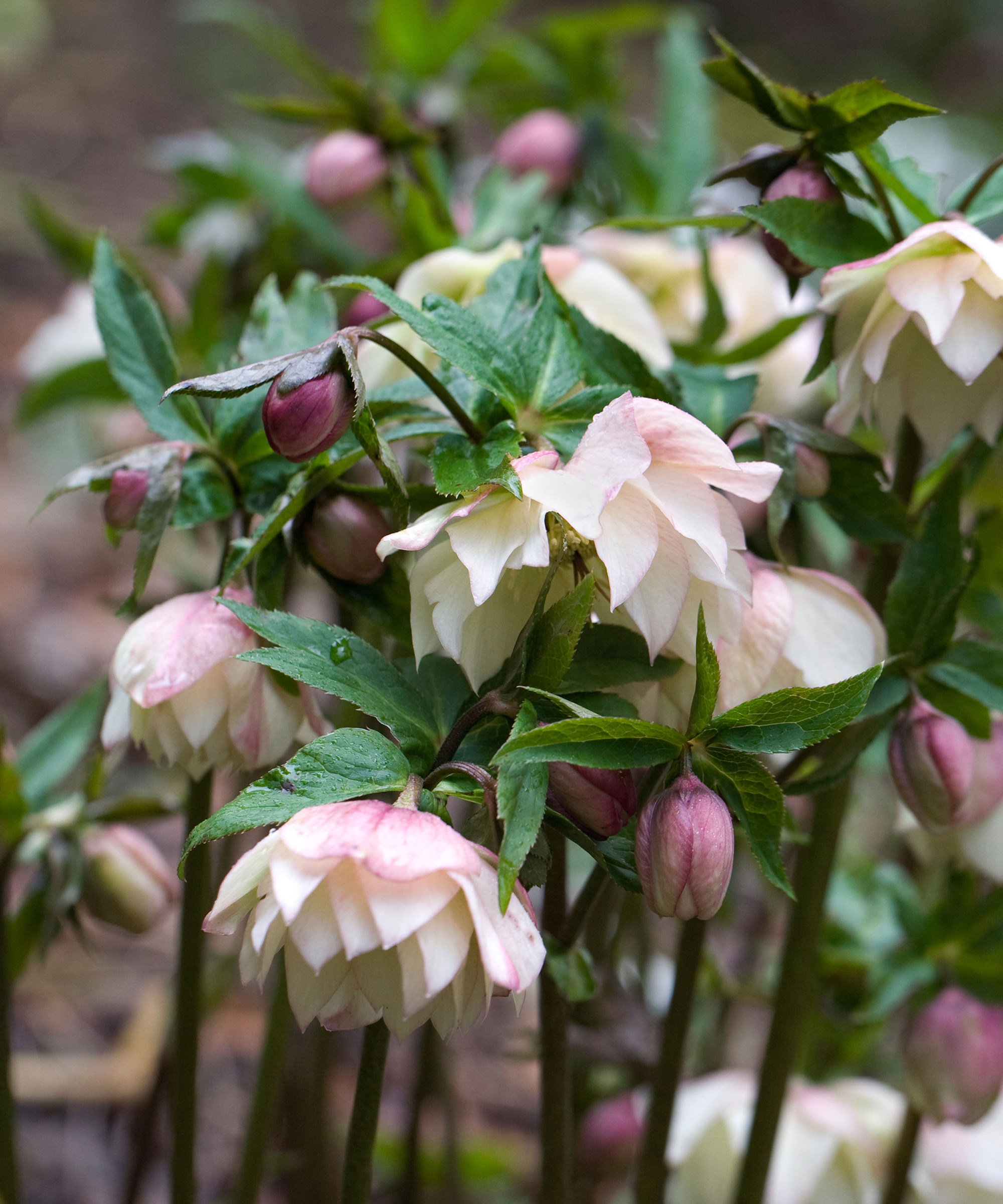
These dwarf evergreen perennials make steadily expanding clumps with boldly divided glossy leaves. Flowers of up to 5in (12cm) in diameter face sideways on upright stems that can reach 12in (30cm) in height.
They’re usually pure white, sometimes pink-tinted, opening from pink buds or fading to pink – there are even a few double-flowered varieties.
If you want to know how to grow hellebores, they do best in shady borders when allowed to develop into good-sized clumps. Slugs are very fond of the emerging buds, so it’s a good idea to protect them with organic slug pellets. Hardiness zone will vary depending on the species.
Some early varieties will bloom from November right the way through to March. Keep deadheading flowers to prolong the blooms.
4. Winter pansies
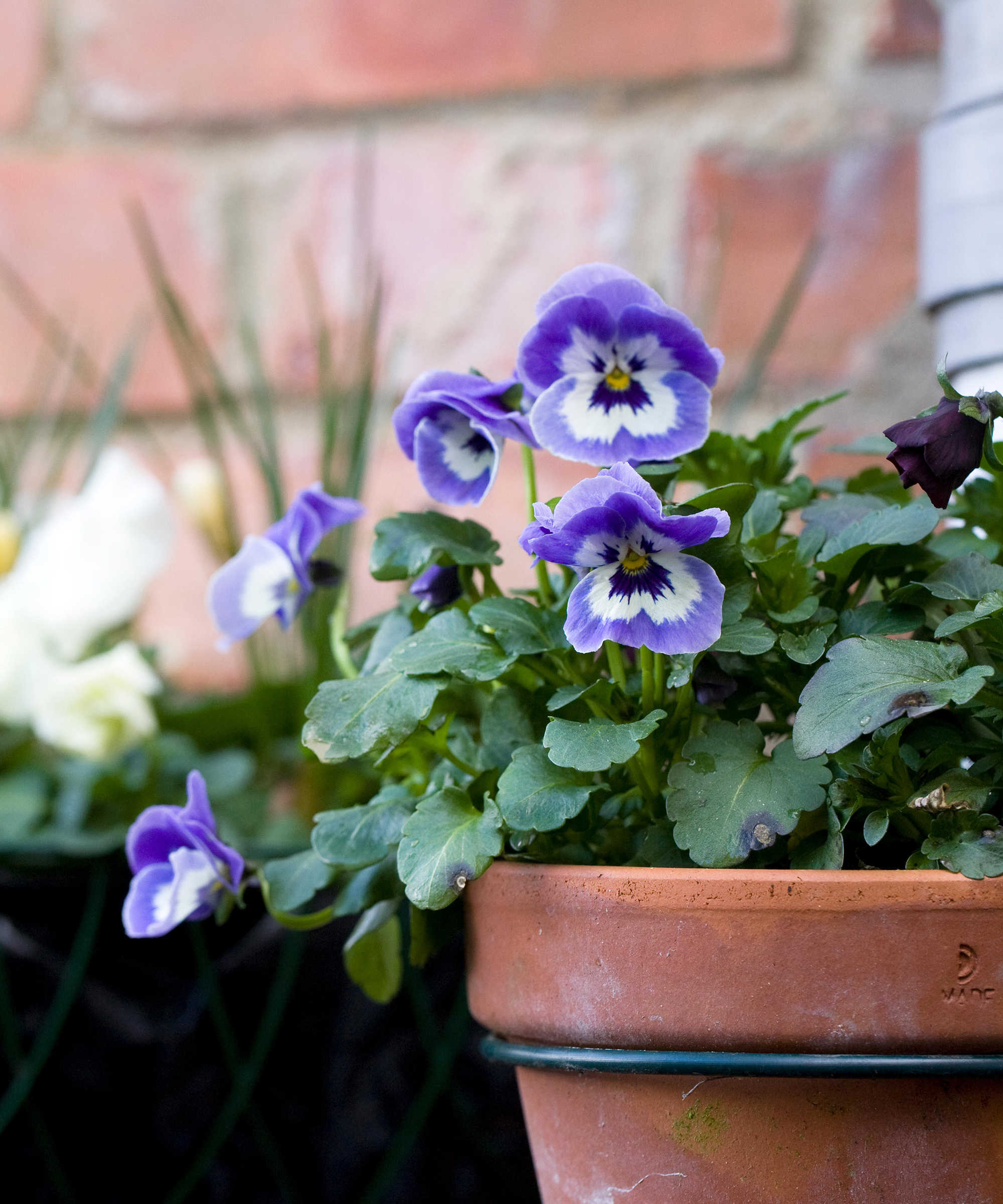
With their small but vibrant flowers, winter pansies and violas give us the opportunity to create colourful cold-season displays in any space, from tiny pots to generous borders.
Pansies flower for more prolonged periods if you can find plants that are well established in their pots ready for planting. Regularly nip off any fading flowerheads as you pass.
If the plants are given good drainage they will make one of the best plants for winter hanging baskets, adding vibrant touches to your displays. If you're adding them to containers on your patio, make sure the pots have plenty of drainage holes and raise them up on pot feet. Mix compost four parts to one with potting grit. In borders, choose a sunny spot with good, well-draining soil. Suitable for US hardiness zones 4-7 approx.
Winter-flowering pansies will not require feeding in autumn but might benefit from a spring dressing or liquid application. Deadhead regularly and nip back straggly stems. Be warned, however, that slugs and snails often spoil blooms. To get rid of slugs in the garden, pick them off at night, fix copper tape around a container or treat the soil with nematodes.
5. Miscanthus sinensis
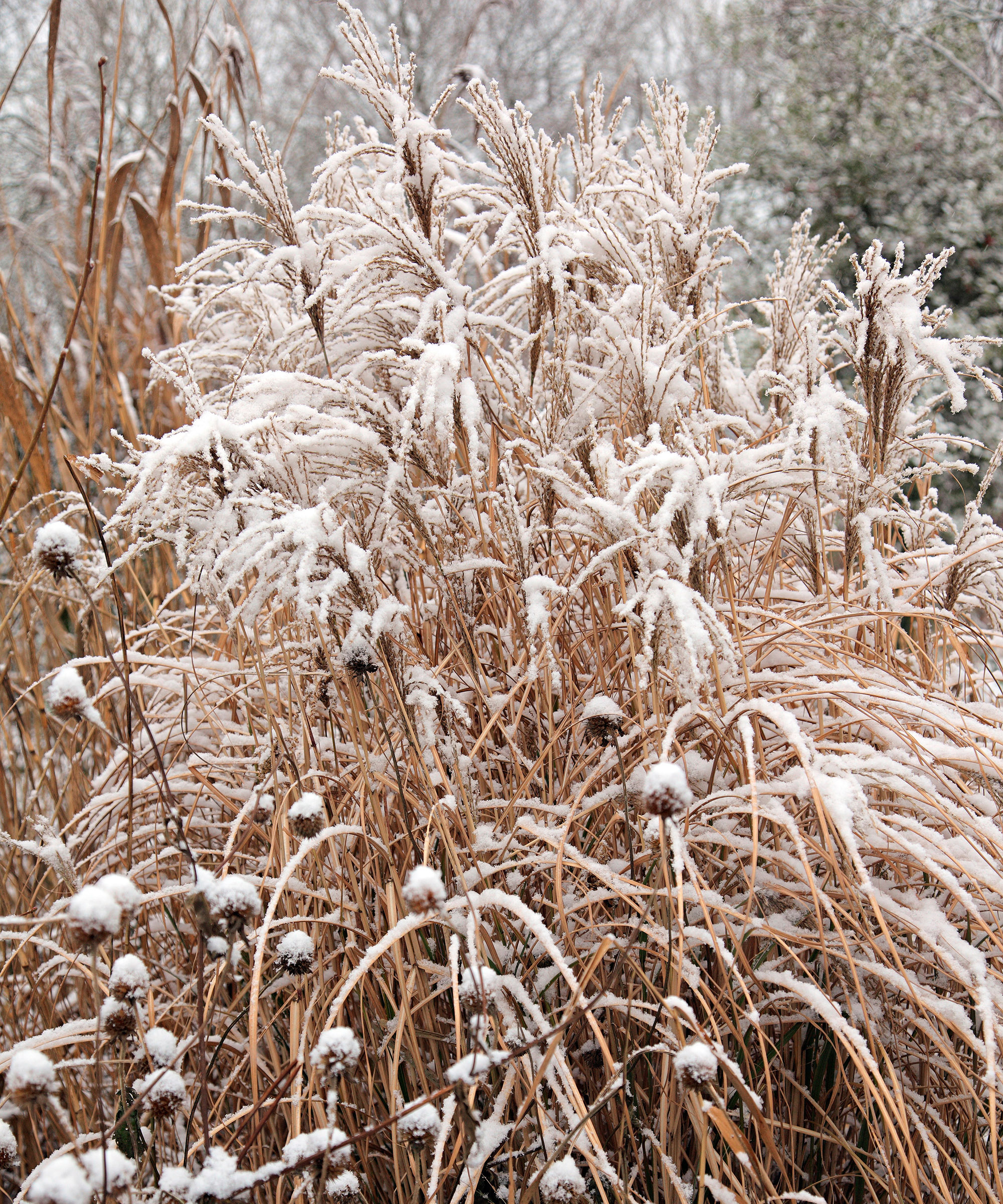
Ornamental grasses are great as part of a low maintenance flowerbed as they largely take care of themselves and look good all year round. But come winter Miscanthus provide extra drama in the bold stature of their stems and delicacy of their plumes. By midwinter, all cultivars turn a golden straw colour.
Most types of ornamental grasses are low maintenance and durable so grow well in tough spots with minimal work on your part. They reach about 8ft when fully grown, so plant at the back of a border for height. Miscanthus sinensis is hardy enough in US Zones 5 - 9.
6. Sea holly (Eryngium)
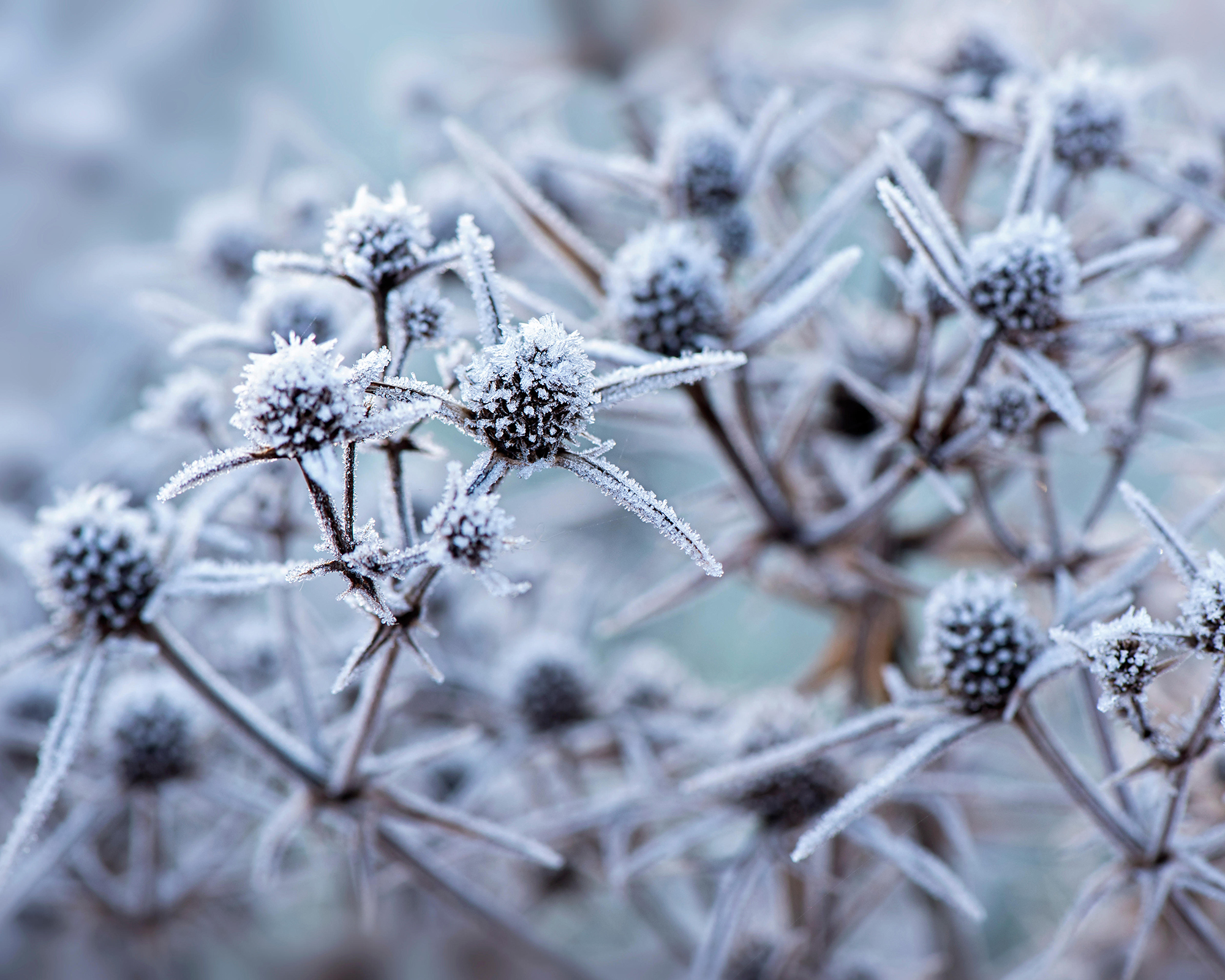
Eryngium are especially dramatic in winter for their sculptural dried heads and foliage that looks fantastic when coated in frost. Sow seeds into a gritty compost, or propagate the European types from root cuttings in early spring. Buy plants of biennial varieties (ones that grow one year and then flower the next) in consecutive years, and leave the seed heads in place to ensure you have flowers every summer.
Dig in lots of horticultural grit when planting, or grow in a gravel garden. Leave seedheads of biennials in situ for winter interest. They also make great cut flowers when dried, so cut a few stems and learn how to dry flowers for a stunning indoor display.
7. Verbena bonariensis
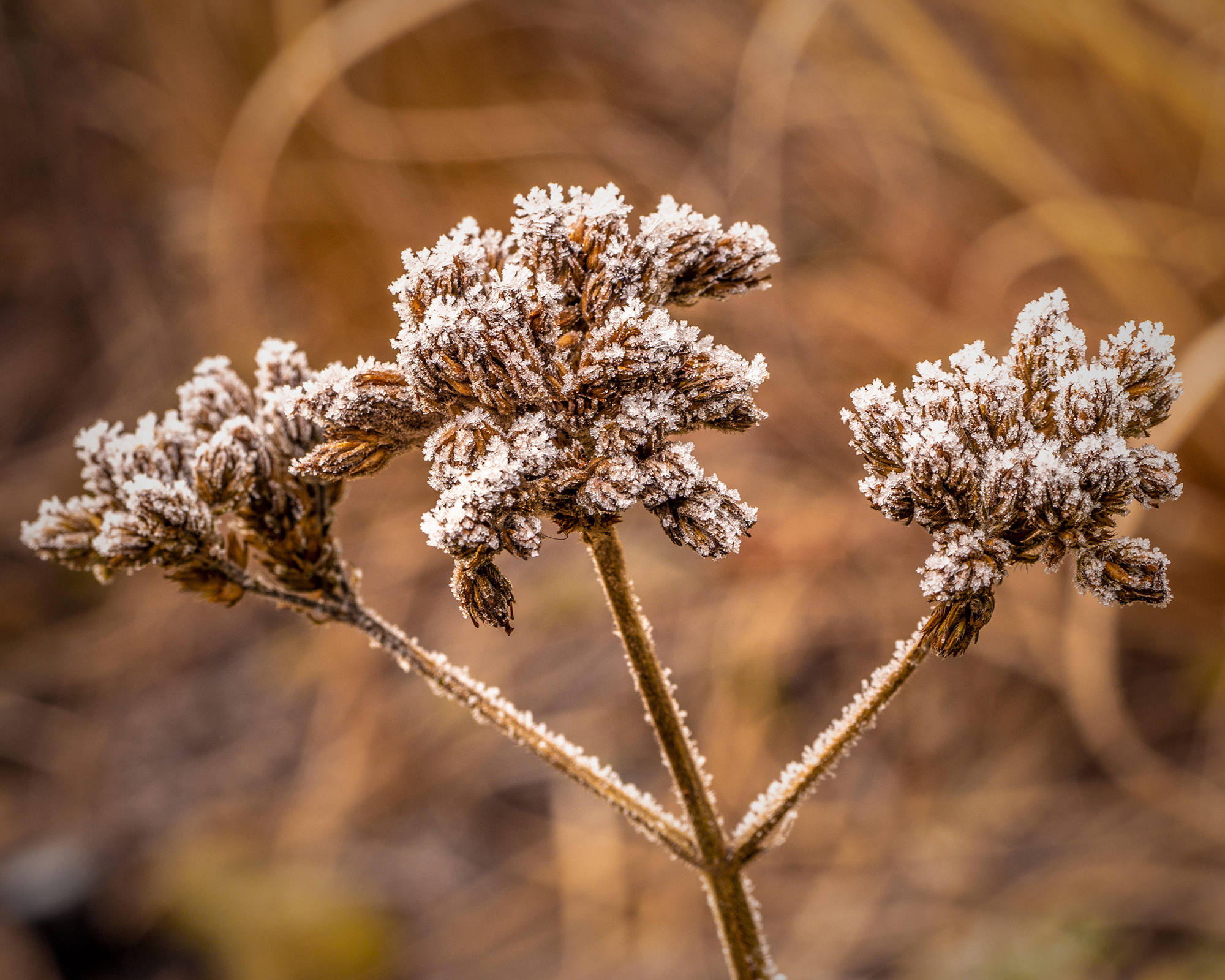
This perennial is one of the best winter garden plants thanks to how it looks on frosty mornings. It's best cut back to the base in spring to prevent dieback, but in the meantime enjoy the structure of the airy stems when dusted with frost. Verbena can be planted in summer in a sheltered sunny spot.
The soil must be slightly moist, light and well-drained, otherwise the plant may not live for long. Enhance drainage and water retention by digging in lots of organic matter and grit prior to planting. Most verbenas can be grown in containers, if provided with excellent drainage and kept slightly moist.
It's important to protect plants from winter. In late autumn, put the plants to bed by laying some dry mulch around the crown. You can also sow verbena varieties from fresh seed in spring to get even more blooms next year.
8. Dogwood
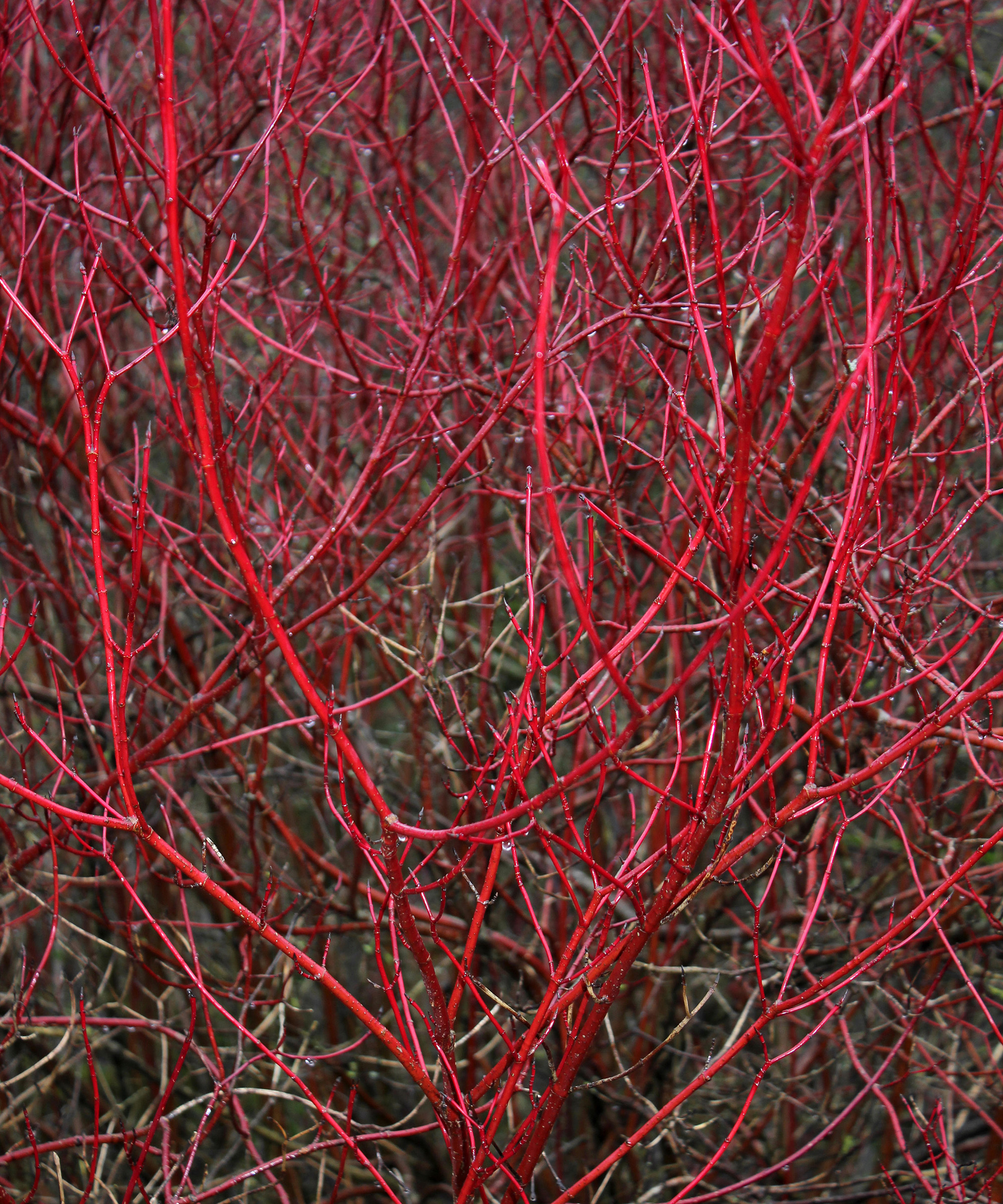
Dogwood is one of the most architectural plants for winter gardens. It will reliably set borders ablaze with its golden leaves in fall. When the weather drops below freezing, it will reveal an upright clump resembling a bonfire of rich orange, red and yellow attractive stems, lighting up the garden until April the following year. The colder it gets, the more the color ramps up. Plant it in a sunny spot to get the best effect.
Their preference is for good, moist soil in full sun, which brings the best stem colours, but if you have to plant them in poor, dry soil then light shade would be an advantage. They’ll even tolerate a certain amount of waterlogging.
After pruning shrubs, make sure the soil is moist, apply a general purpose fertilizer on poor soils and mulch generously over the roots with well-rotted compost.
9. Himalayan birch
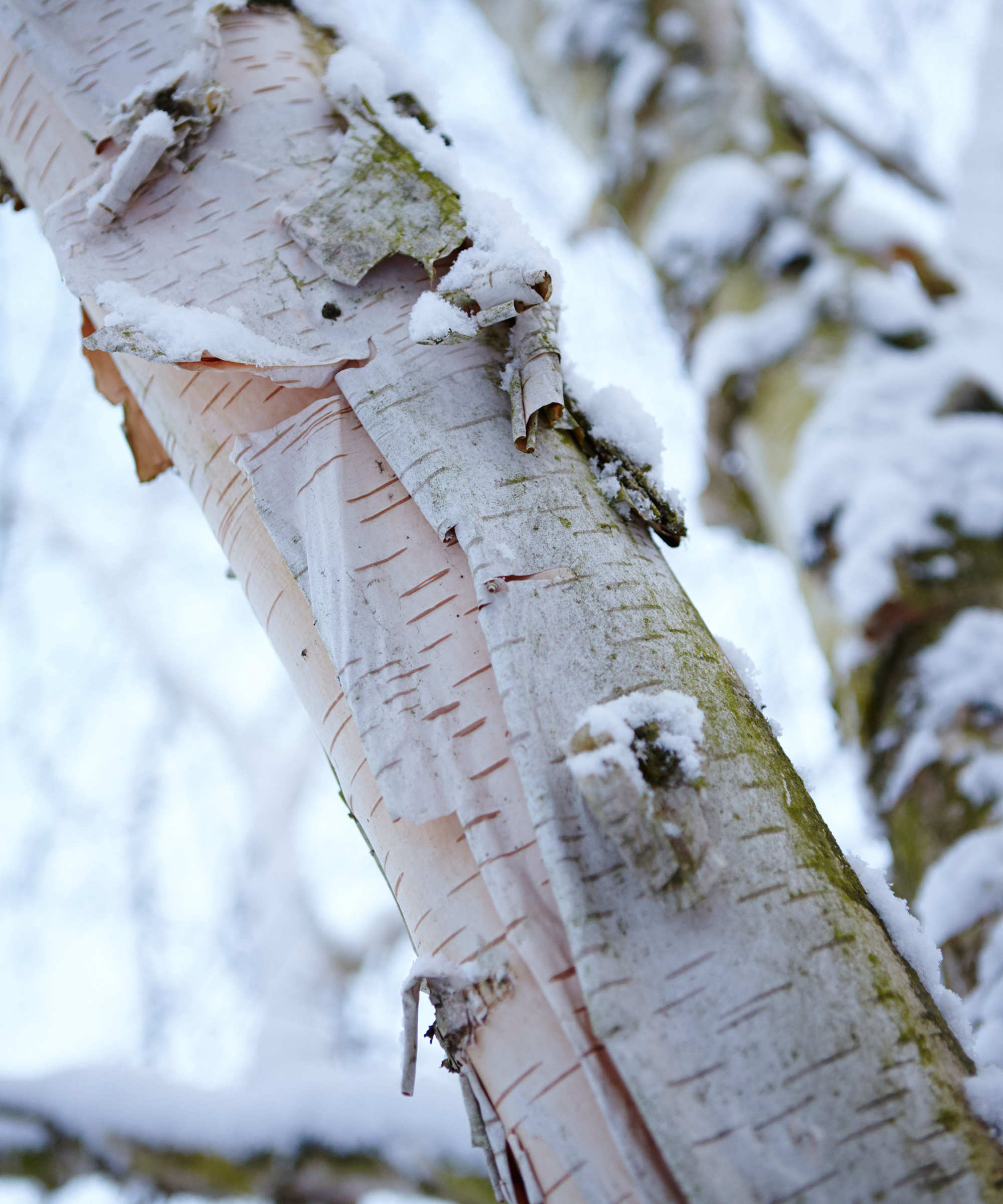
Thanks to its striking white stems, this birch is a top contender for the list of best winter garden plants. Betula jacquemontii is often planted in groups or makes an eye-catching feature as a multi-stemmed specimen.
Plant container-grown young birch trees at any time when the soil is not frozen, parched or soggy – spring and autumn are the best seasons. Plant bare-root plants between November and March. Birch roots spread widely, so don’t create a deep but narrow planting hole.
Prepare the ground by forking plenty of weed-free organic matter in to a wide planting area. Water containers thoroughly before planting; afterwards, be sure to keep the roots from drying out – at least until the tree is established. Support is crucial, especially for larger specimens.
Mulching with weed-free soil improver in fall is advised. Generally, little pruning is necessary, except to correct crossing and rubbing branches and to ensure that one main leader develops, rather than two or three competing ones.
10. Winter heathers (heaths)
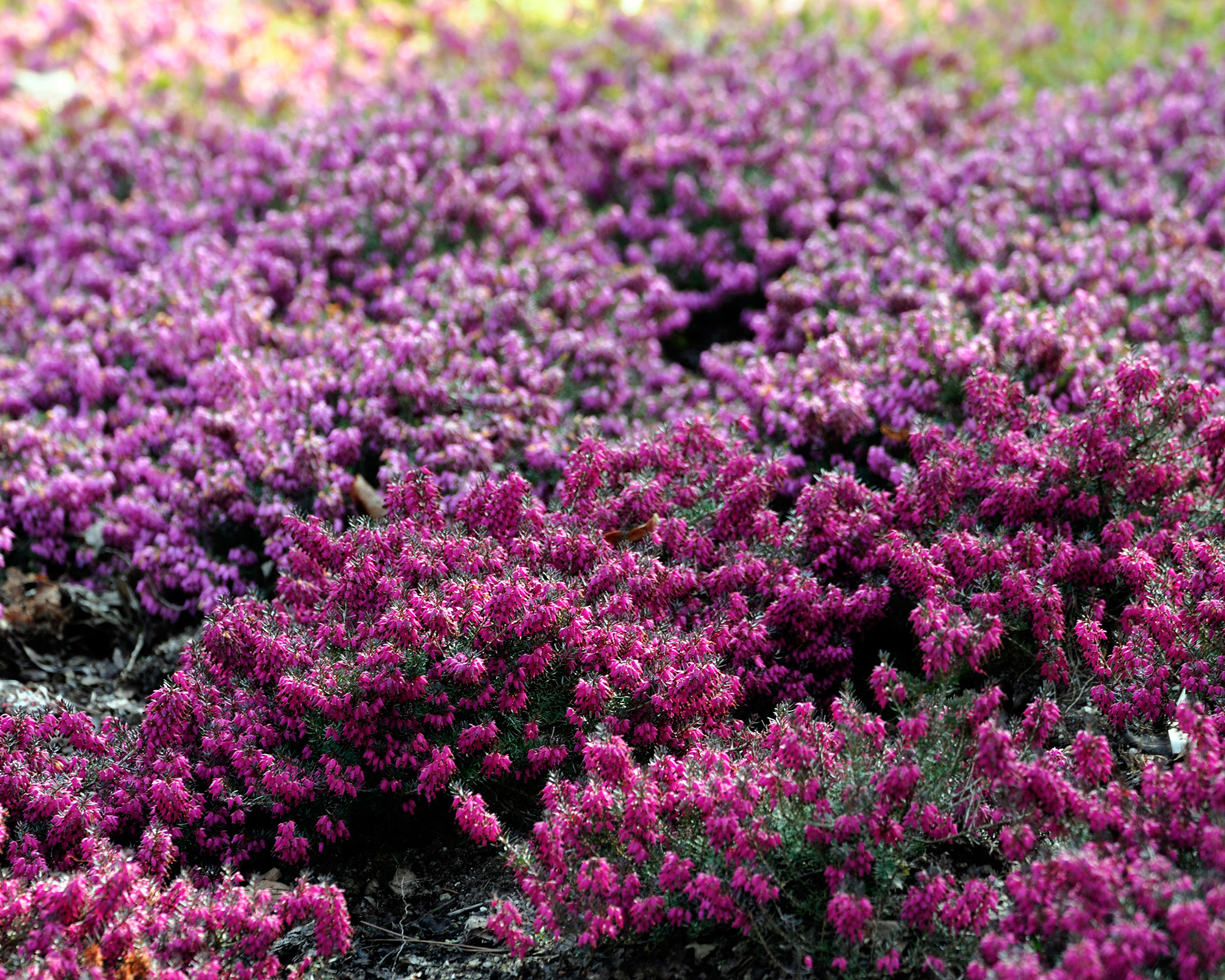
Long-flowering and low maintenance, winter heather is great for pots and borders alike. You don’t need a specific variety – visit a good garden center and pick whichever catches your eye and matches your colour scheme.
Early flowering heather is one of the best winter garden plants for so many reasons. It is a stunning start to the gardening year, looking an absolute picture against fresh green grass and clear blue winter skies. They are also an important source of food for the first insects to emerge in spring.
Great for the 'hands off' gardener as these are low maintenance plants. All they need is a bit of a trim after they've flowered to keep them in shape and to encourage even more flowering the following year. But even that is nonessential.
Winter and spring-flowering varieties (Erica carnea, Erica x darleyensis and Erica erigena) grow well in most soil types. US Hardiness zones will vary depending on the variety.
11. Winter honeysuckle
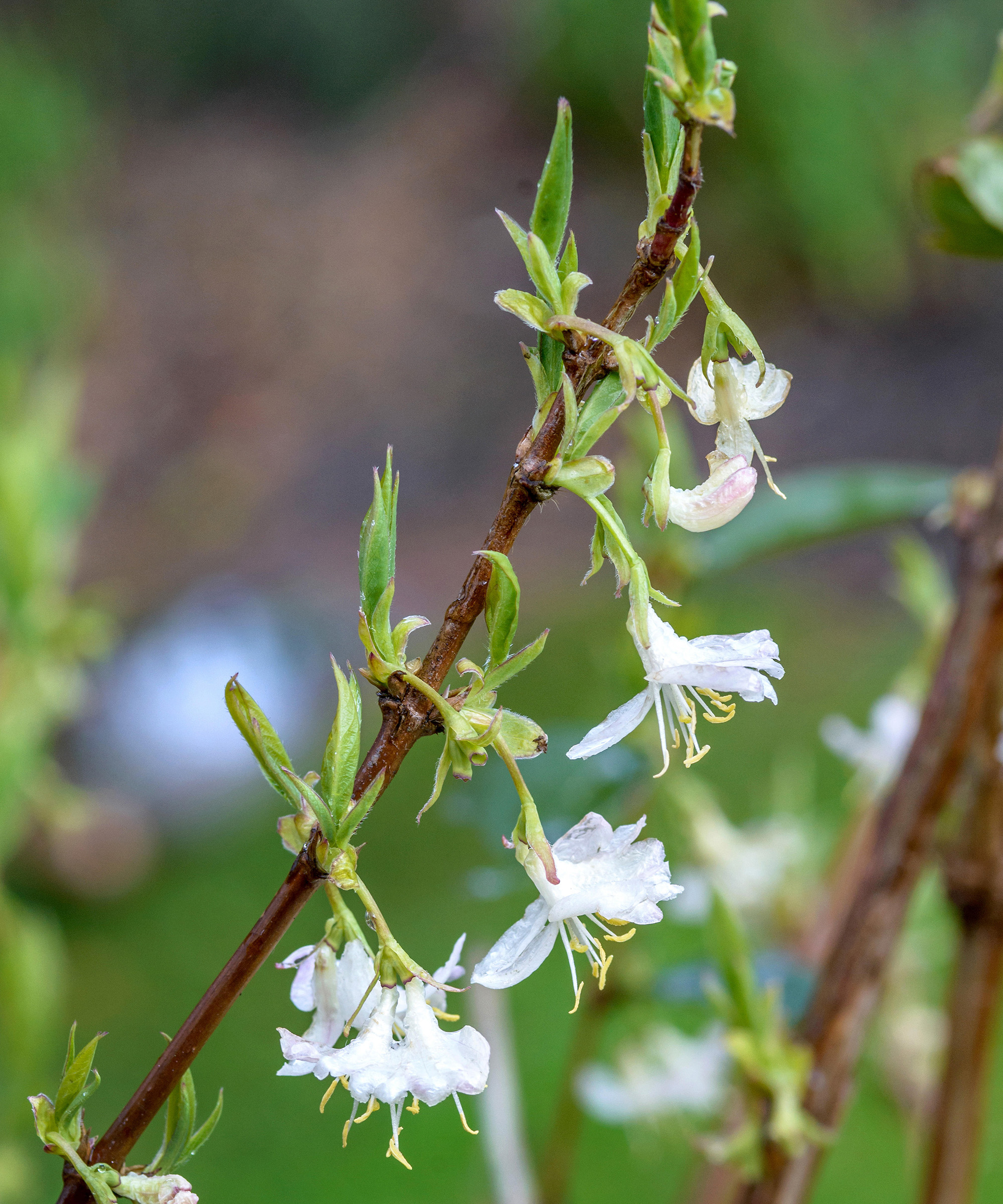
A deliciously fragrant deciduous climber and one of many beautiful winter flowering shrubs. It will produce creamy white flowers from December to March. Plant it in a sunny spot where it can be trained against a wall or fence. It will need some form of climbing plant support. Somewhere that you often pass by is ideal, so that the scent can lift you on cold winter days.
It can cope in sun or partial shade but it likes fertile, humus rich soil. Cut back after flowering in spring and apply a good layer of well-rotted compost to the base. You might see berries emerging after flowering, but these will cause a stomach upset if eaten so leave these well alone. Plant in hardiness zones 4 - 8.
12. Corkscrew hazel
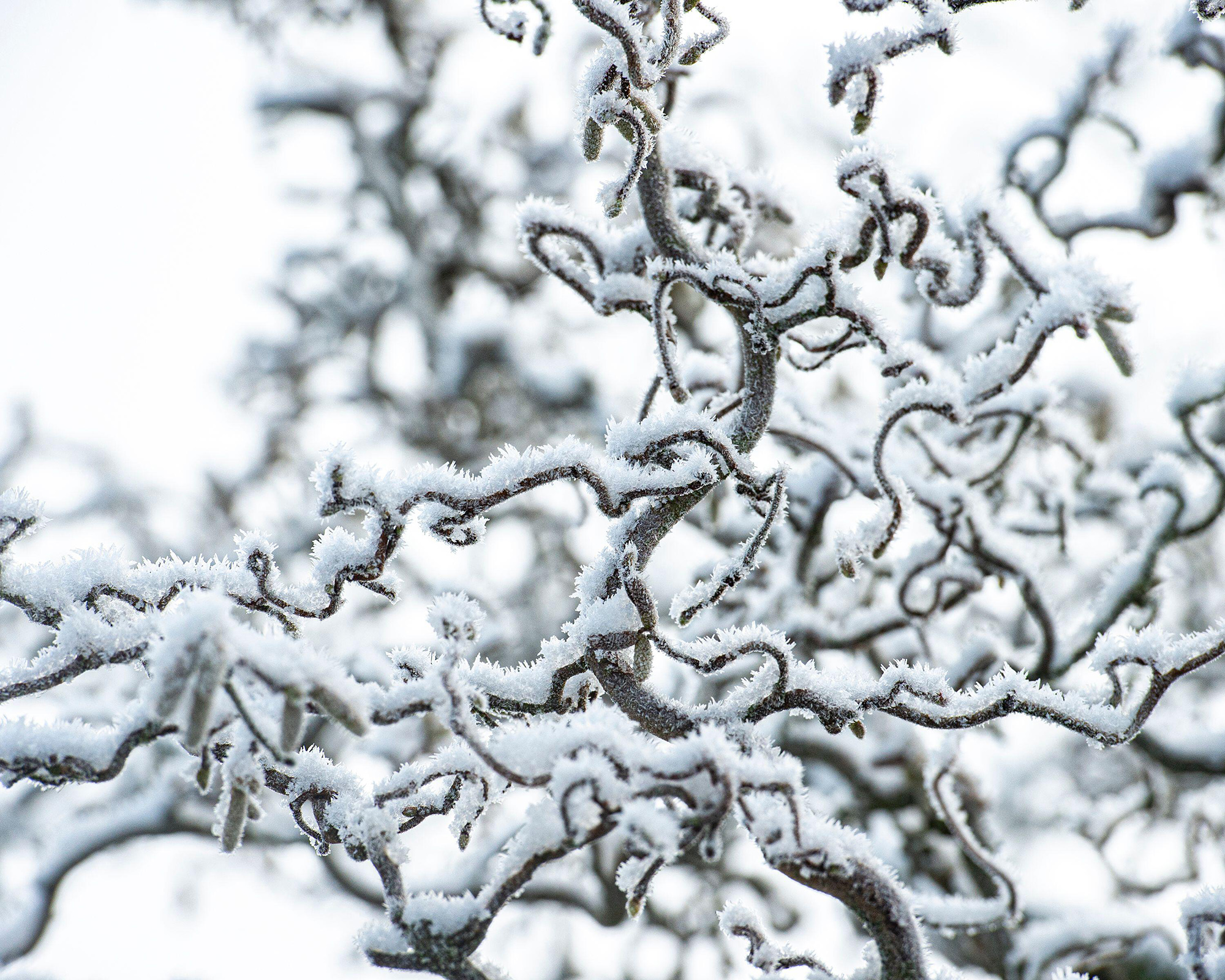
Bare branches and stems can look just as beautiful as foliage and flowers during the winter months, and the corkscrew hazel is a prime example. As the name suggests, the stems of this plant are curly and look striking when dusted with snowflakes and frost.
They are hung with catkins in February and March. They are then followed by nuts, which are edible. It doesn't mind an exposed position as long as it's in sun or partial shade. Remove any non-twisted stems when they shoot from the base. Plant in sun or semi-shade. Its height ranges from 6.5ft to an eventual height of 13ft.
When buying them they can come in various sizes, from young plants to a 12Ltr pot of corkscrew hazel on Crocus.
13. Tibetan cherry
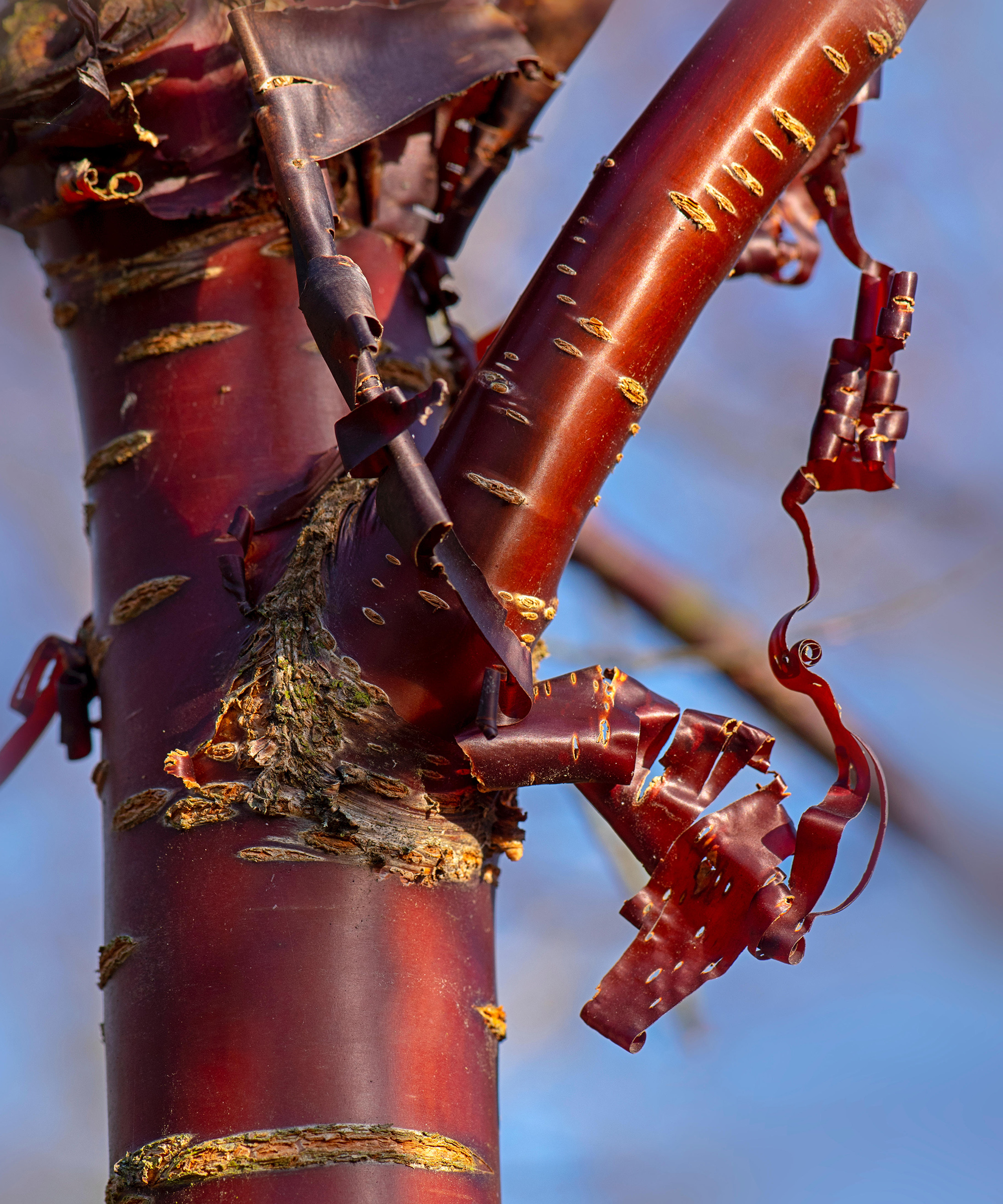
Trees are an essential part of winter landscaping ideas, and a well-positioned specimen adds height and stature to a garden. The glossy peeling brown bark of the Tibetan cherry is as smooth and shiny as polished mahogany. It's a real joy during the cold months, when the leaves have disappeared and its beauty is fully exposed.
It likes moist, well drained soil and isn't fussy about pH. You'll get blossom as this is one of the best flowering trees in spring and its leaves will turn yellow in fall before dropping away to showcase its beautiful bark. Like most trees, once established it can be left to its own devices.
14. Bergenia (elephant's ears)
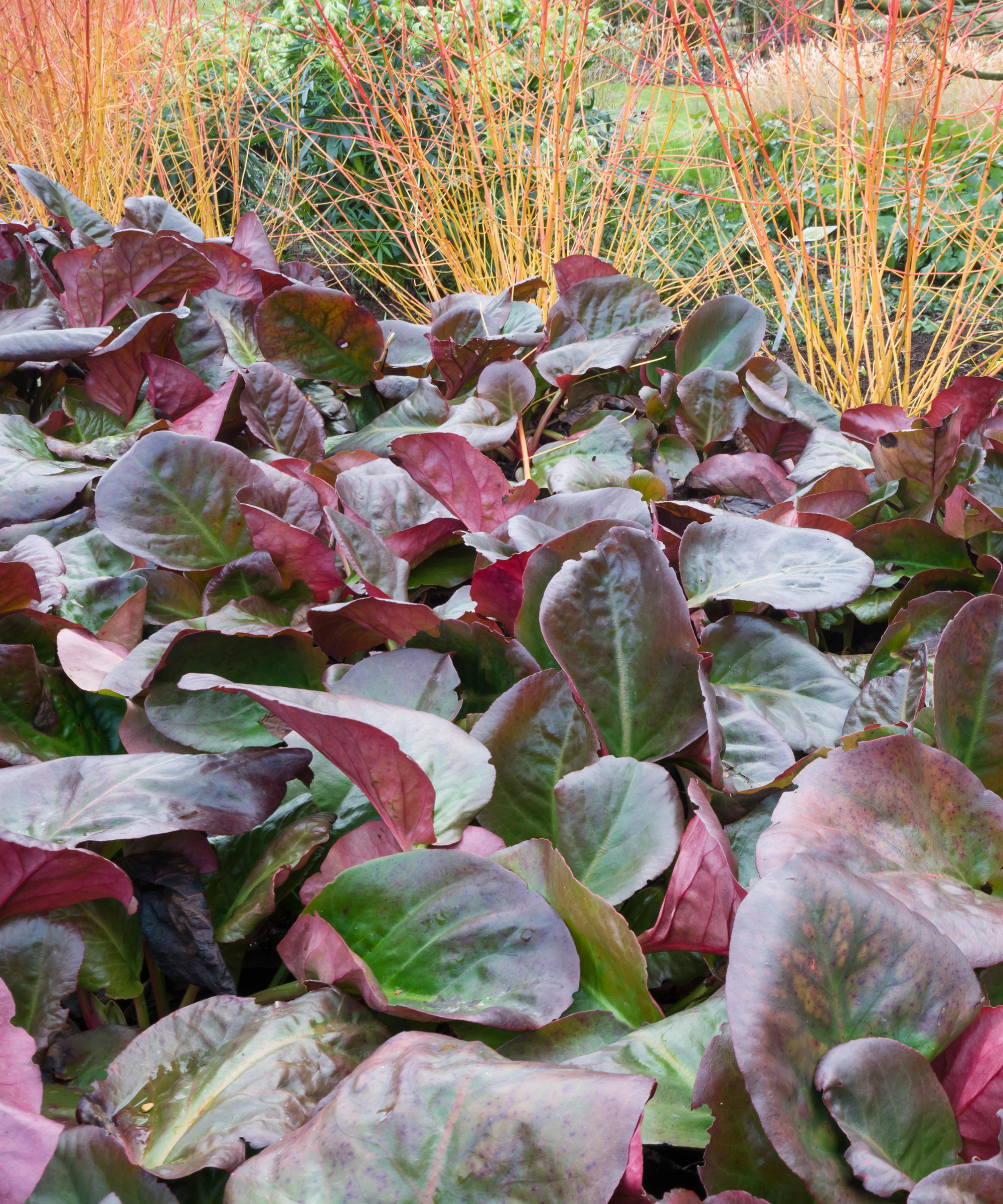
Big leaves and vivid flowers make bergenias one of the best winter garden plants. A valuable multi-season plant, they make two entirely different, but equally valuable, contributions to our gardens.
The vast majority are evergreen, and their bold foliage is often richly colored, especially in winter when its presence is so valuable. Then, in spring, there are sprays of vivid flowers.
It spreads steadily over the soil's surface making it one of the best ground cover plants (no-one likes the site of exposed soil). As the days shorten and temperatures drop, the backs of the leaves turn red. In some, this is a deep blood red, almost bronze; in others, it’s more of a vivid beetroot shade. The coloring can be genuinely dramatic, especially when they're partnered with winter and spring bulbs.
15. Winter-flowering clematis
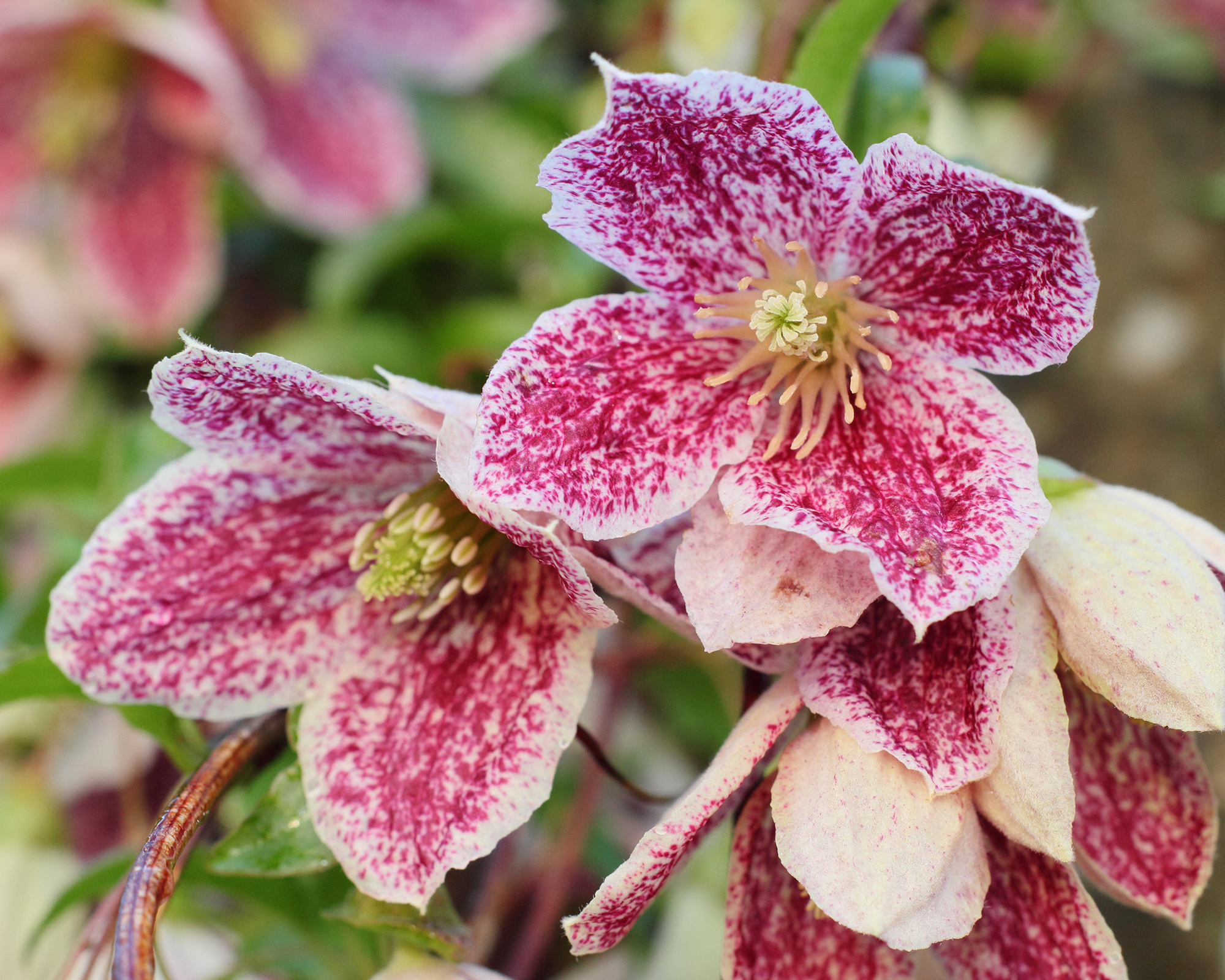
Winter flowering clematis are delicate bloomers which will transform fences, trellis and pergolas with profuse flowers in colder months.
If you want to learn how to grow clematis in winter, there are several varieties happy to open their flowers from autumn all the way to spring. Most notable is evergreen C. cirrhosa 'Freckles', a Mediterranean native climbing to 10ft (3m) or more. It produces elegant creamy flowers, spotted with maroon. They carry a light citrus fragrance and are followed by silken seedheads.
They will need a growing environment of well-drained soil and plenty of sun to ripen their stems ready for a solid show of winter blooms. Winter-flowering clematis can be grown in container too. Use 50:50 John Innes No2 and multi-purpose compost with a little added grit, but insulate pot sides to protect plants from frost and keep roots shaded from hot sun in summer.
16. Snowdrops
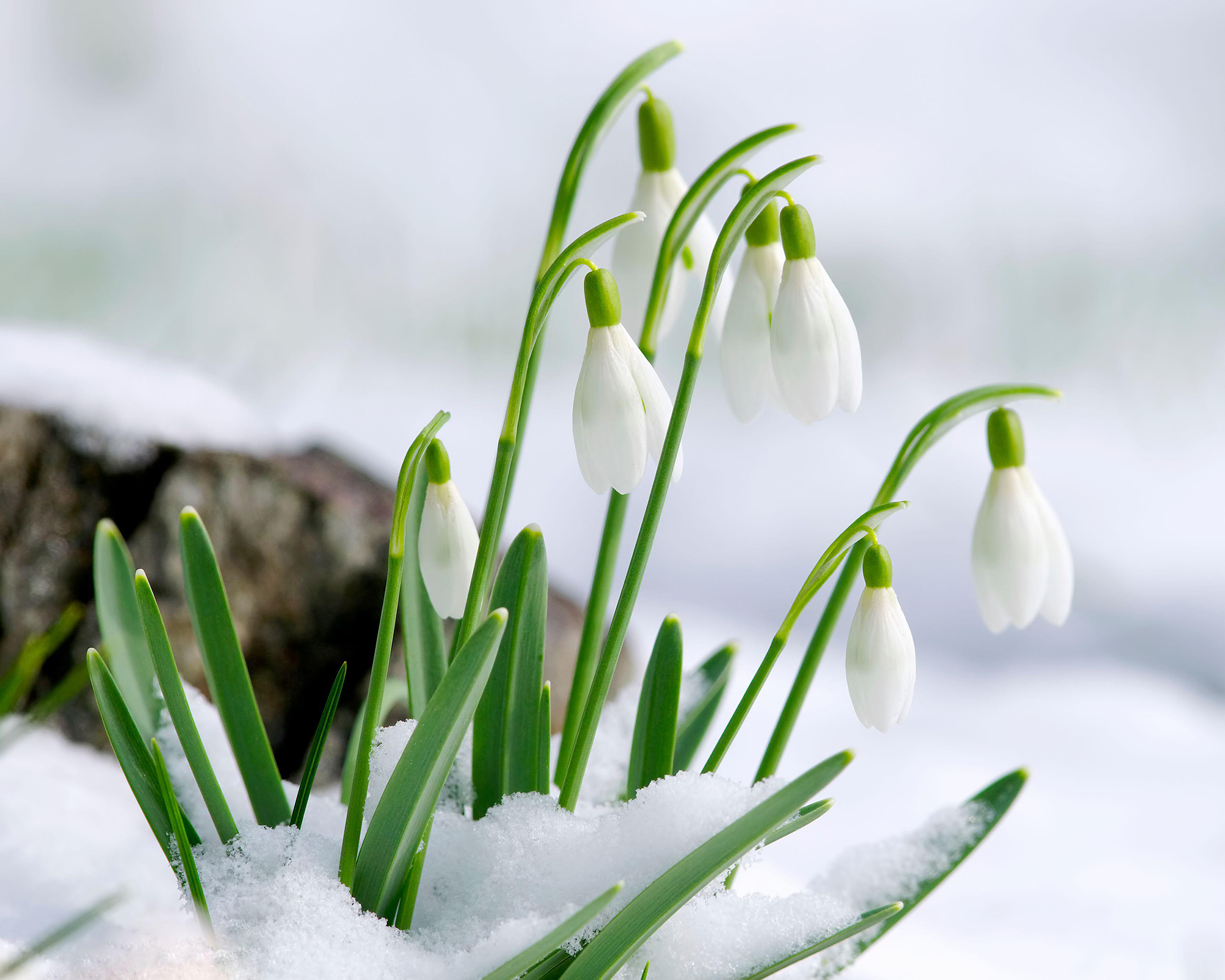
Snowdrops will take just about anything except very low temperatures in a raging gale. They will still look good peeking through snow, and will even stretch to emerge through a few inches.
Snowdrops are very cold hardy and thrive in most garden situations that are not hot and dry. As a rule, they don’t like being grown in pots, but they’re generally adaptable and not easy to kill. They’ll usually spread, sometimes by seed but mainly by multiplication of the bulbs, and you can help them increase by lifting, splitting and replanting every few years.
Try the Galanthus ‘S. Arnott’ which will flower in January and February. This superb snowdrop produces big lantern flowers that exude honeyed scent. It naturalises well in heavy soil, in semi-shade or shade, and makes a great cutting garden flower.
17. Cyclamen
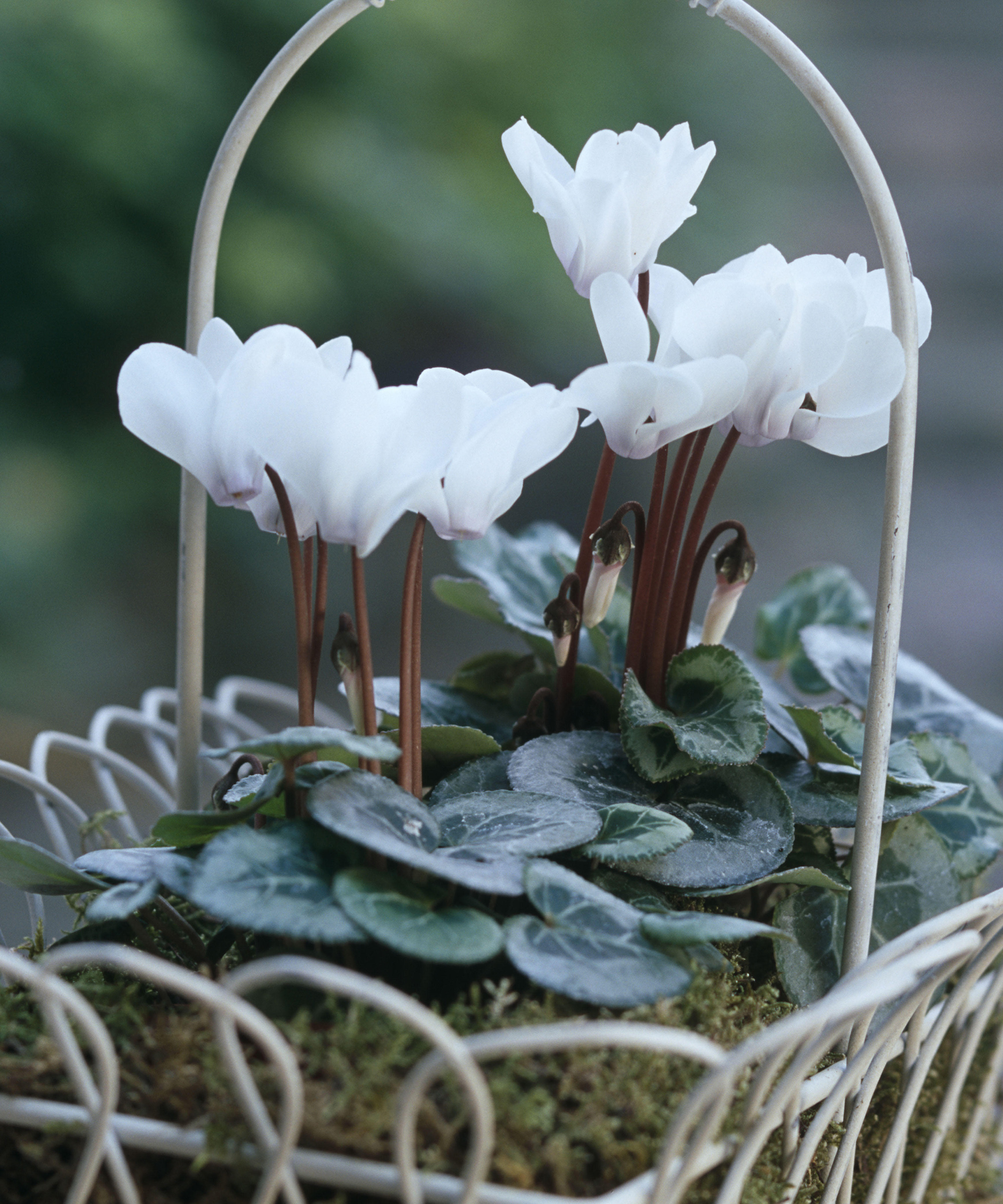
Autumn-flowering cyclamen have flowers in white or pink, with the added bonus of attractively marked leaves that look good long after the flowers have died. Perfect for both indoors or out, you prolong flowering by twisting off fading flower stems at the base. Look for mini cyclamen that are scented - and do the sniff test before you buy!
They are especially well suited to winter planter ideas and will look lovely when combined with trailing ivy. They can also be grown inside, and often top the list of best Christmas plants. Place the plant in a light but cool spot and water as required.
18. Heucheras
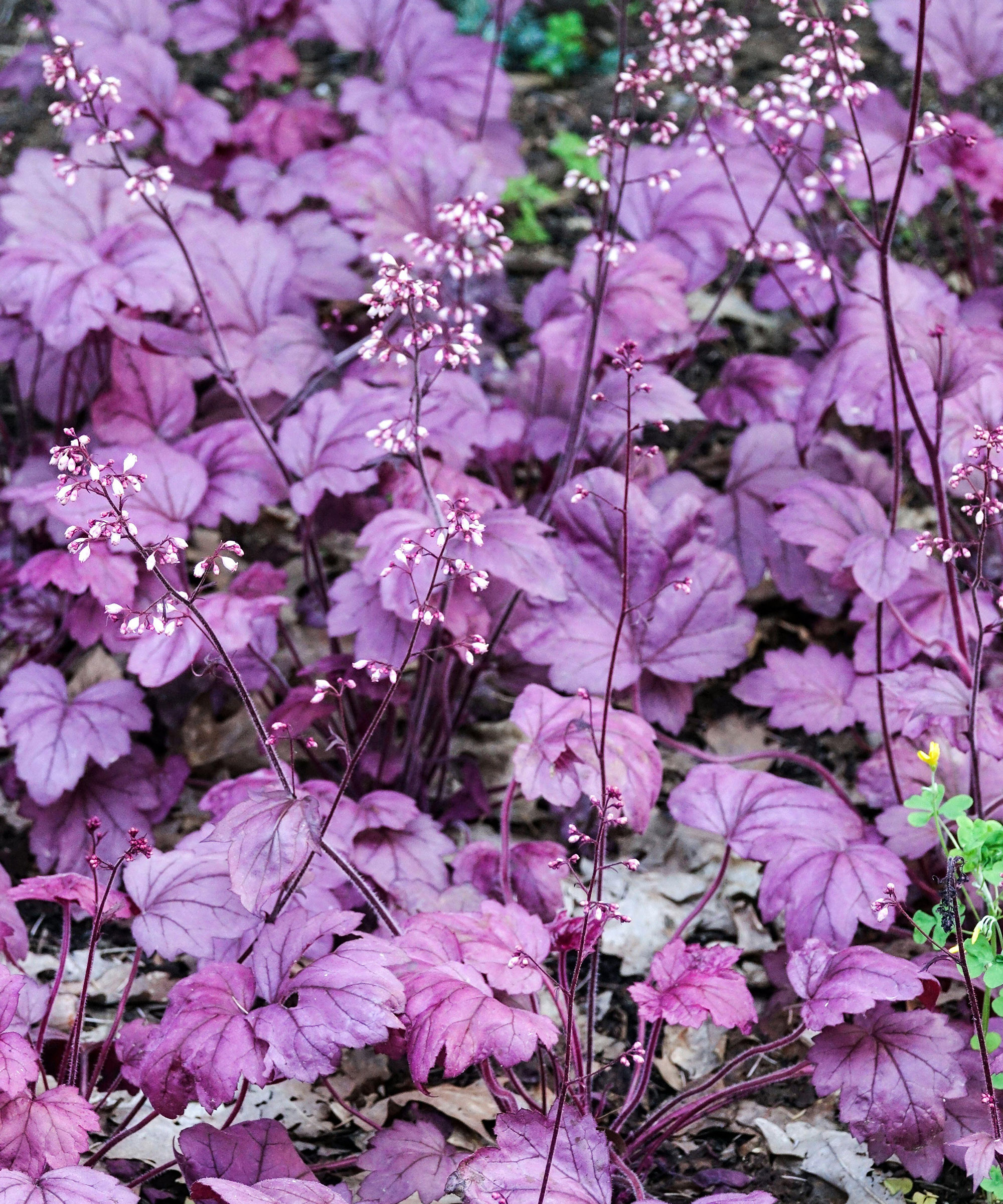
Heucheras are easy to grow evergreens. They make a mound of ruffled foliage through which vertical flower spikes emerge. Leaf color ranges from almost black to purple, bronze and pink – plus orange, gold, yellow and silver – along with a multitude of colour combinations.
When planting, as a general rule, dark-leaved varieties are better in full sun, with paler types in shade. But ultimately, provided you choose the right variety for your own garden situation there really are no bad choices. Just go for those that appeal to you – and enjoy them.
19. English holly
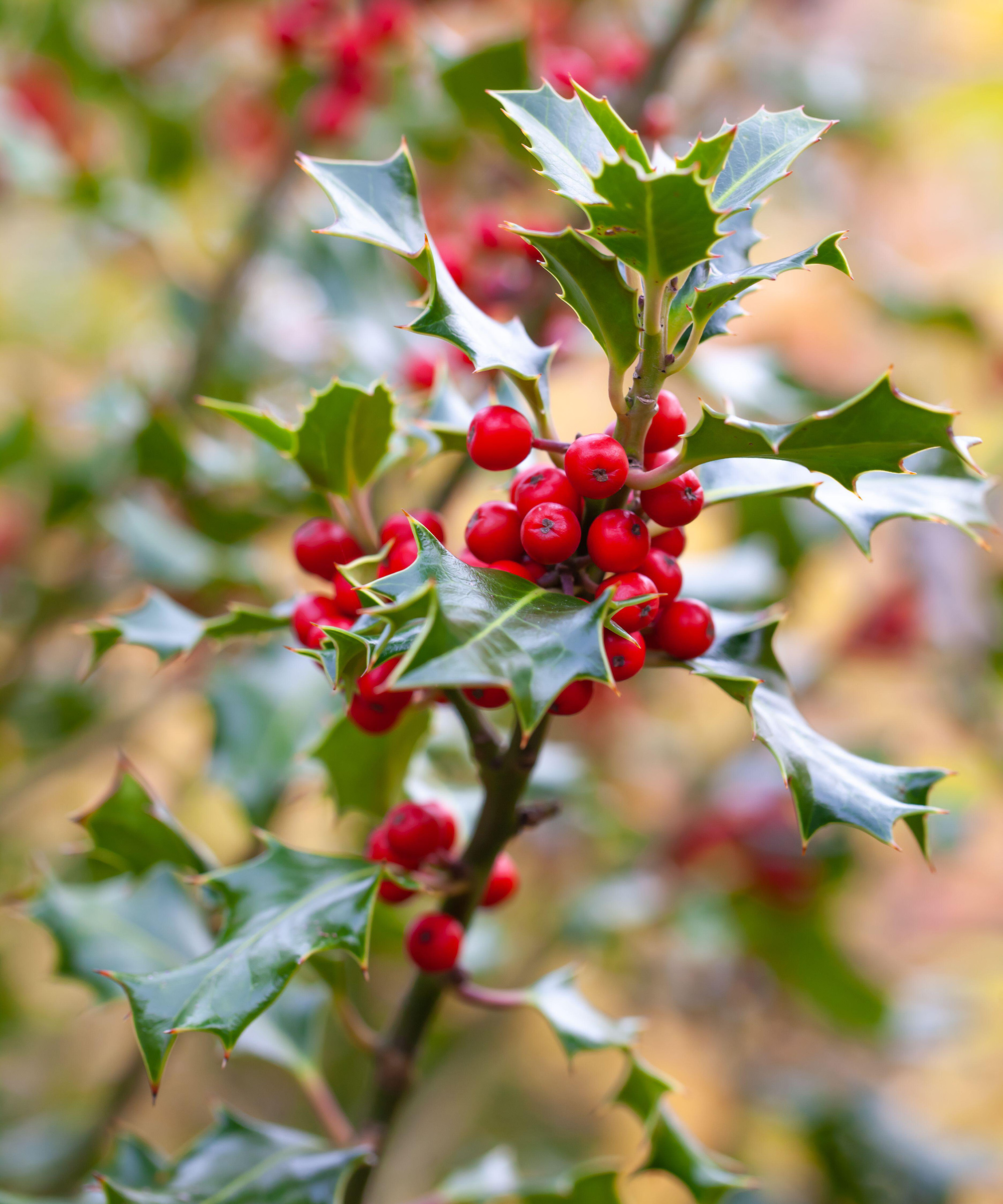
No list of best winter garden plants would be complete without this seasonal favorite. Loved as much for its handsome foliage as it is for the berries that range in color from red to orange or purple.
Hollies are either male or female (check before you buy), so in order for a female plant to bear berries, plant a male holly nearby. If you get this right these will be some of the best plants for winter berries, looking especially good as sprigs as part of your Christmas decorations
Hollies like well drained soil types, coping in sun or some shade, but the variegated varieties need full sun to preserve their colouring. Many can be topiarised, while the prickliest varieties make excellent hedges.
Do you need to water winter garden plants?
It's important not to forget about watering plants in winter. They will require less watering than during the summer as the warm weather will dry them out more quickly.
But the winter winds can be drying too and there can be long periods without rain. As part of your winter jobs in the garden, make sure you check your winter plants weekly and give them a good dowsing. Remember that plants growing in pots will need more water than those in beds and borders.
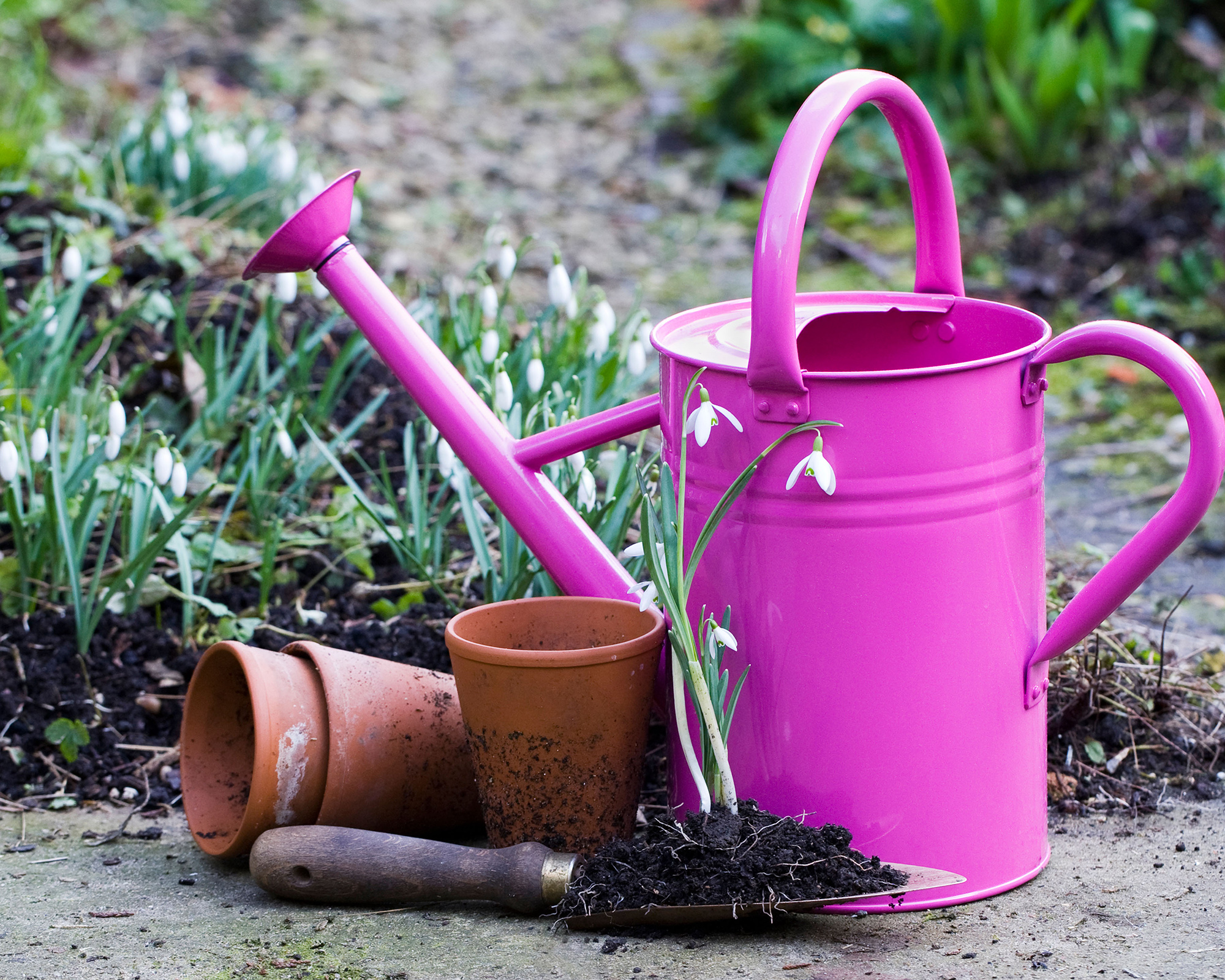
What are the top garden plants that survive winter?
Trees will stand up well to winter, and even if they lose their leaves their bark will light up the winter garden. Tibetan cherry has shiny reddish brown bark whilst Himalayan birch will glisten silver.
For climbers, winter honeysuckle and winter flowering clematis will give scent and floral interest. Whilst perennials like Hellebores will give colour from December to March.
Flowers which may look delicate, like snowdrops and cyclamen, will survive snow and give off a lovely fragrance. Whilst ground cover plants like bergenia and heather will disguise bare soil.
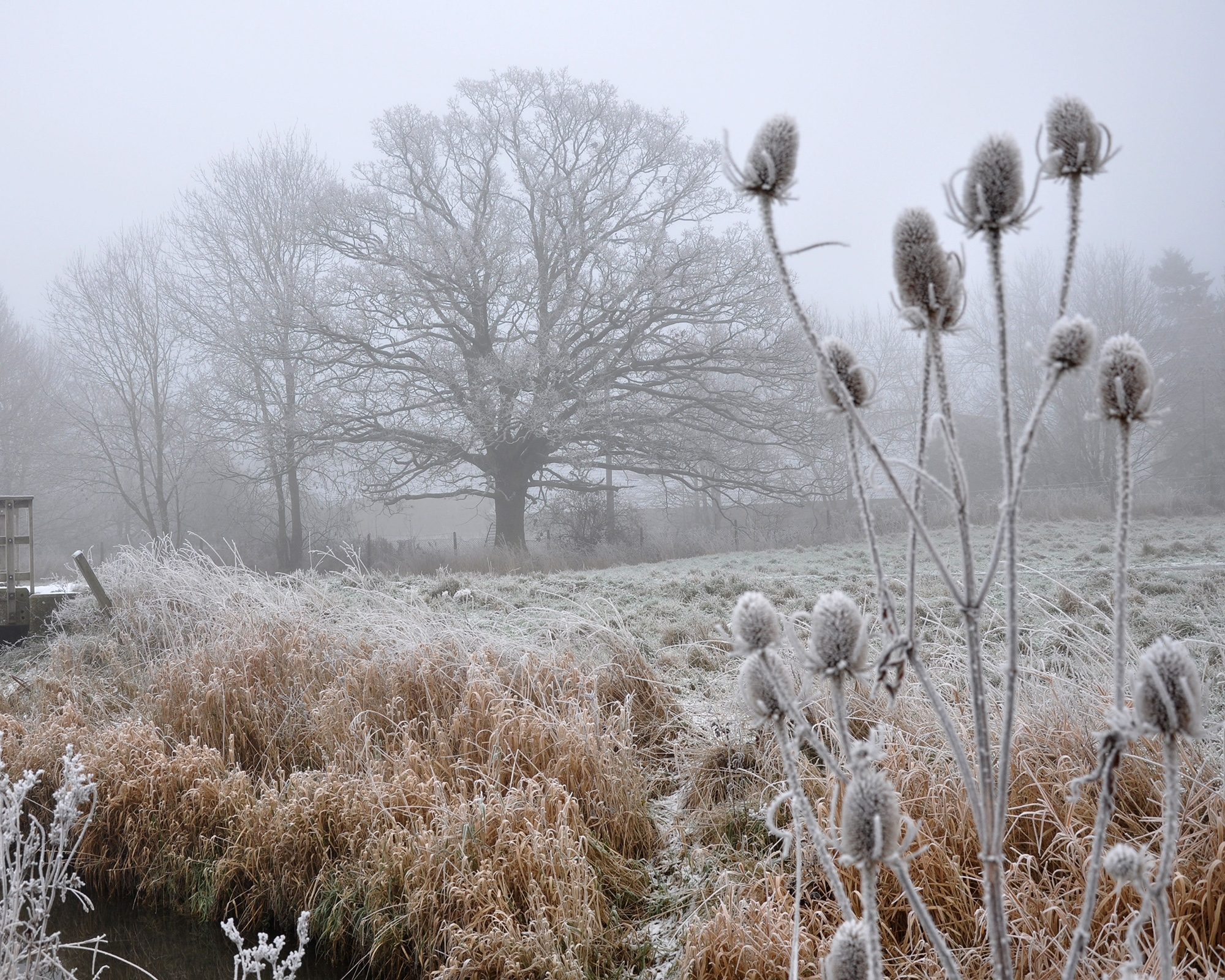

Teresa has worked as an Editor on a number of gardening magazines for three years now. So she is lucky enough to see and write about gardening across all sizes, budgets and abilities. She recently moved into her first home and the garden is a real project! Currently she is relishing planning her own design and planting schemes. What she is most passionate about when it comes to gardening are the positive effects it has on our mental health to grow and care for plants, as well as being great for the environment too and help provide food and shelter for wildlife.
